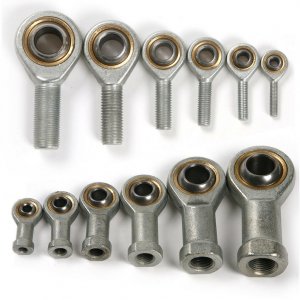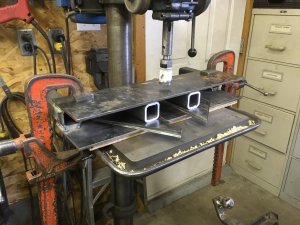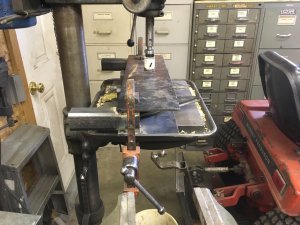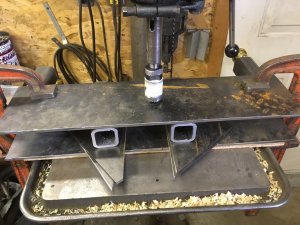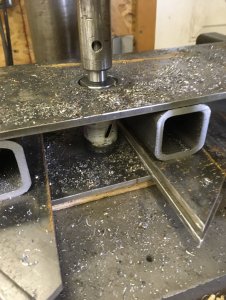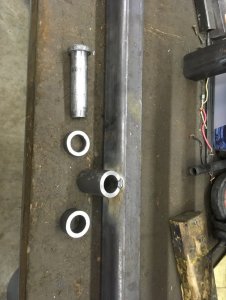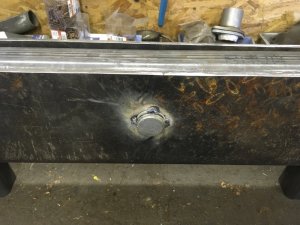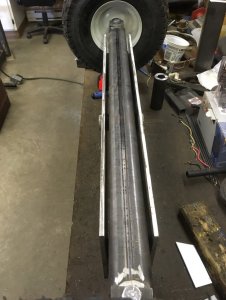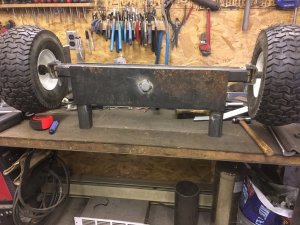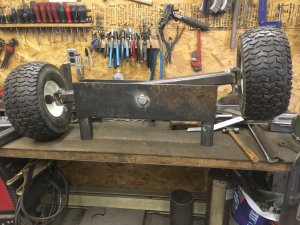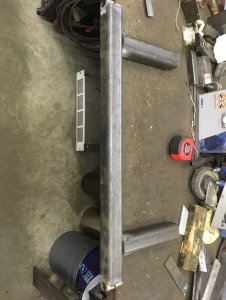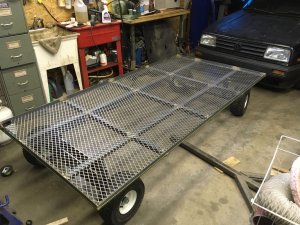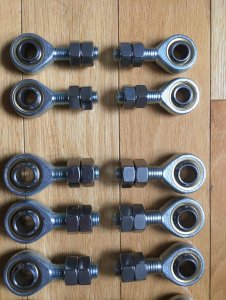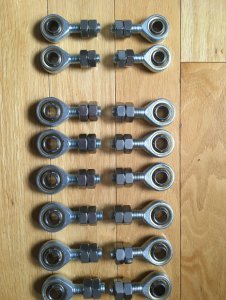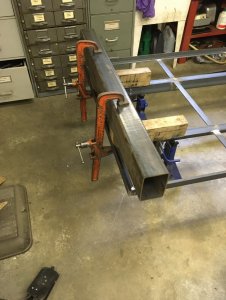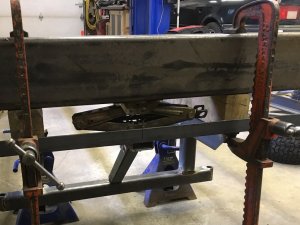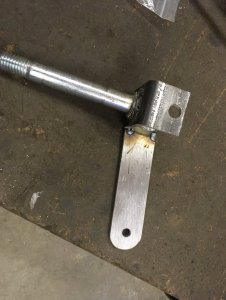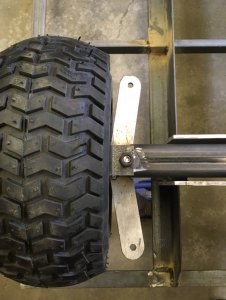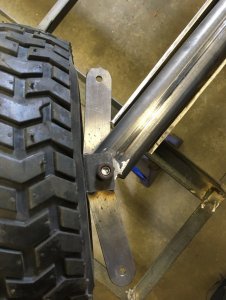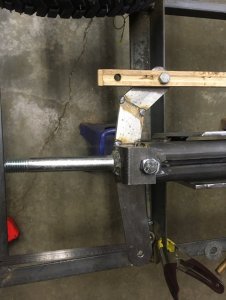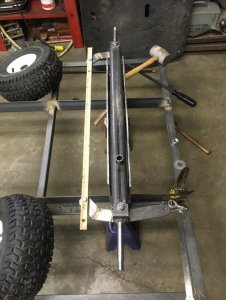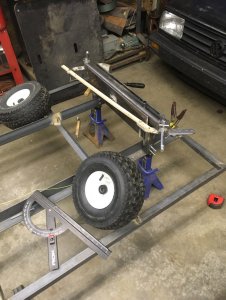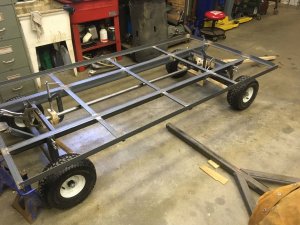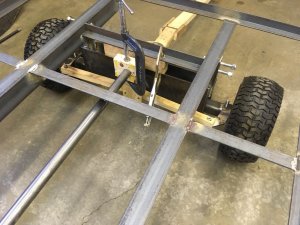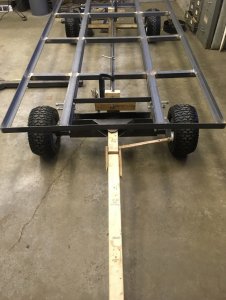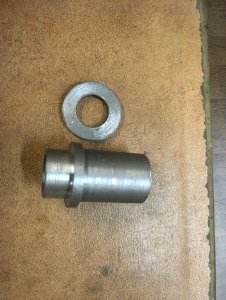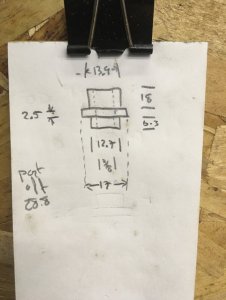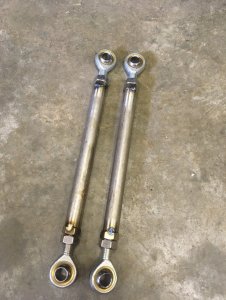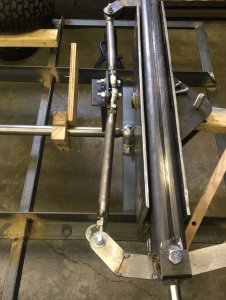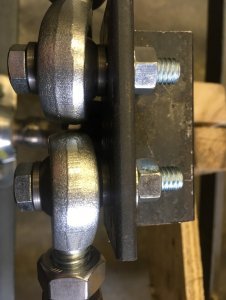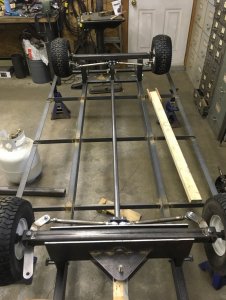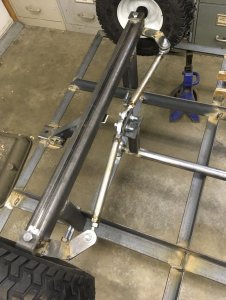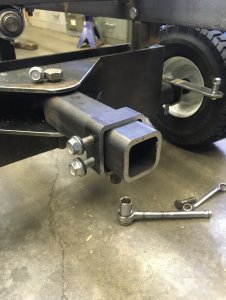Here is a new project I am working on. My girlfriend loves flowerbeds and makes new ones often so she needs to use soil and mulch. I always keep a pallet of mulch around but I store it far and at a place where there is a lot of mosquitos/flies so I will build a trailer to have those easy to bring to were she is working.
The trailer will be for off-road use only with the wheels "in the corners" so it stands and we don't have to lift it to hook/unhook. The trailer will be flat with the bottom made of expanded sheet metal on which I want to be able to drop a complete 4x8 sheet of plywood. The outside dimensions of the trailer will therefore be around 48.5" x 96.5". I already bought 4x 15x6.50-6" cheap wheels on Amazon for this trailer and I want to make it 4 wheel steering. Is it really required? No but I want the challenge.
Here is where I am at currently, a lot of the steering parts are made
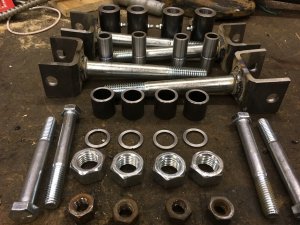
The vertical axle will be a 0.5" ID 0.75" OD tube inside a 0.75" ID 1.25" OD tube welded to the axle and the wheel "hub" will attach with a .5" bolt. The 0.5" ID 0.75" OD tube is a bit over 2" and the bigger one is 2". Oh also the bigger tube will have a grease fitting and the inner one has a groove to help the grease to turn around it between the tubes.
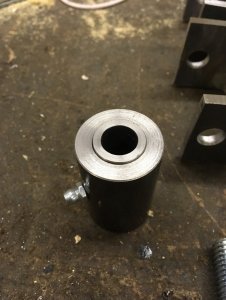
The U part is actually a 2x2 receiver hitch tube that I cut lengthwise to get my profile, I had this laying around from a previous project therefore I only needed to cut it to length. I must say this will be the weak point of the steering IMO.
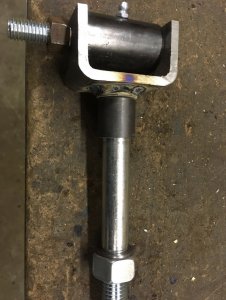
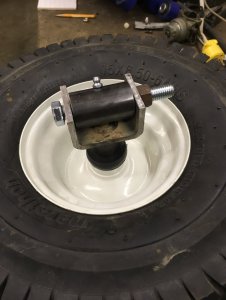
The axle is 2x2x0.25" square tubing (overkill but I had 24' of it).
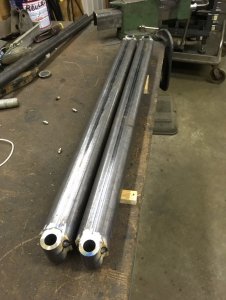
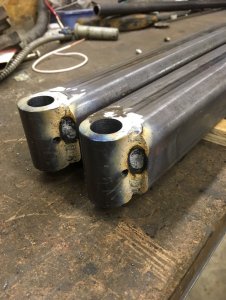
My next step will probably be to make the "A" frames to support both axles, the rear one will be rigid but the front one will be on an axle to conform to the landscape a bit, the same way most garden tractor are setup.
For the steering it will be based on Ackermann and the front and rear steerings will be linked together; When the trailer gets pulled in a curve to the left the rear axle will steer right, this way the rear wheels will follow exactly the same tracks as the front wheels. It's working this way for the carts carrying the luggage at airports.
The thing I don't fully know yet is how to make a Ackermann steering for a 4 wheel trailer. For a garden tractor or something simple as this the Ackermann principle is that the outer tie rod end are bolted on a "line" from the wheel vertical pivot to the center of the rear axle. I've found documentation for 4ws wheelchairs stating that in this case the "line" is from the vertical pivot to the center of the chair but I don't know if this applies to a trailer. Here is the documentation if someone is curious: Optimizing the turning radius of a vehicle using symmetric four wheel steering system look at the 2 last pictures to understand what I am trying to explain.
I'll update when I make progress
The trailer will be for off-road use only with the wheels "in the corners" so it stands and we don't have to lift it to hook/unhook. The trailer will be flat with the bottom made of expanded sheet metal on which I want to be able to drop a complete 4x8 sheet of plywood. The outside dimensions of the trailer will therefore be around 48.5" x 96.5". I already bought 4x 15x6.50-6" cheap wheels on Amazon for this trailer and I want to make it 4 wheel steering. Is it really required? No but I want the challenge.
Here is where I am at currently, a lot of the steering parts are made

The vertical axle will be a 0.5" ID 0.75" OD tube inside a 0.75" ID 1.25" OD tube welded to the axle and the wheel "hub" will attach with a .5" bolt. The 0.5" ID 0.75" OD tube is a bit over 2" and the bigger one is 2". Oh also the bigger tube will have a grease fitting and the inner one has a groove to help the grease to turn around it between the tubes.

The U part is actually a 2x2 receiver hitch tube that I cut lengthwise to get my profile, I had this laying around from a previous project therefore I only needed to cut it to length. I must say this will be the weak point of the steering IMO.


The axle is 2x2x0.25" square tubing (overkill but I had 24' of it).


My next step will probably be to make the "A" frames to support both axles, the rear one will be rigid but the front one will be on an axle to conform to the landscape a bit, the same way most garden tractor are setup.
For the steering it will be based on Ackermann and the front and rear steerings will be linked together; When the trailer gets pulled in a curve to the left the rear axle will steer right, this way the rear wheels will follow exactly the same tracks as the front wheels. It's working this way for the carts carrying the luggage at airports.
The thing I don't fully know yet is how to make a Ackermann steering for a 4 wheel trailer. For a garden tractor or something simple as this the Ackermann principle is that the outer tie rod end are bolted on a "line" from the wheel vertical pivot to the center of the rear axle. I've found documentation for 4ws wheelchairs stating that in this case the "line" is from the vertical pivot to the center of the chair but I don't know if this applies to a trailer. Here is the documentation if someone is curious: Optimizing the turning radius of a vehicle using symmetric four wheel steering system look at the 2 last pictures to understand what I am trying to explain.
I'll update when I make progress

